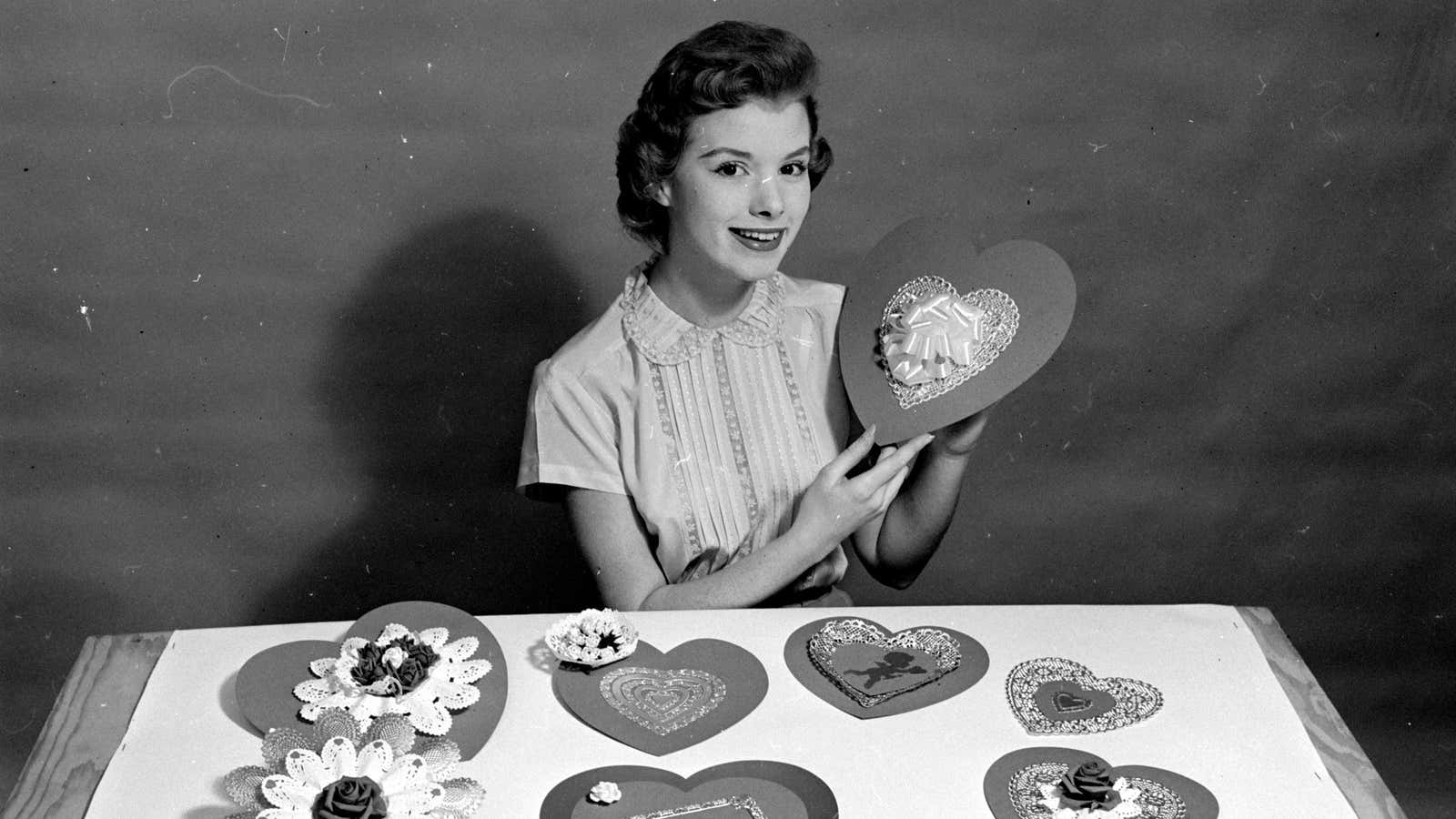The Real Story of Valentine’s Day

Valentine’s Day is coming soon. Sometimes referred to as “Oh Shit, I Forgot Again” Day, the annual celebration of love on February 14 is celebrated with candy, greeting cards, and hard-to-reach dinner tables, but where did Valentine’s Day come from? Why do we celebrate it? Who said we have to give people candy? What does all this mean ? I will answer all these questions and more below.
The Surprisingly Long History of Valentine’s Day
Valentine’s Day is not a modern holiday created by Hallmark and Big Candy. The first Valentine’s Day was in AD 496, when Pope Gelasius I instituted a feast to commemorate the date of the martyrdom of Saint Valentine of Rome. By the Middle Ages, the modern traditions of Valentine’s Day already existed – love, poetry, gifts.
Real Saint Valentine
The real story of Saint Valentine is almost lost in time. Apparently there were three early Christians named “Valentinus” who were martyred by the Romans, but we do not know the history of any of these early lives of Valentinus. The first-hand accounts were probably destroyed during the persecution of Diocletian at the beginning of the fourth century.
Over the years, myths and legends have sprung up about Saint Valentine, allegedly known for secretly arranging Christian marriages for Roman troops. Or he was imprisoned in Rome, but restored the sight of the jailer’s daughter while awaiting execution by sending her a postcard that read “From your Valentine.” These stories are probably a holiday retcon invented at a later date to pretend it all made sense from the start. As the Catholic Church stated in 1969: “Although the monument to St. Valentine is ancient … apart from his name, nothing is known about St. Valentine, except that he was buried in Via Flaminia on February 14.”
Even though we don’t know much about him, you can still visit the flower-adorned skull that supposedly once belonged to Saint Valentine at the Basilica of Santa Maria in Cosmedin in Rome. Creepy!
Geoffrey Chaucer: The Real Father of Valentine’s Day
Until the 1300s, the feast of St. Valentine was just another Catholic holiday, sandwiched between the feast of St. Blas on February 3rd and the feast day of St. Polycarp on February 23rd. Then came the English poet Geoffrey Chaucer and shook up the celebration. game for all time.
In Chaucer’s Parliament of the Birds , published in 1382, he explicitly associates Valentine’s Day with romantic love, imagining that birds choose their mate on that day.
At that time, courtly love was of great importance, and by 1400 Valentine’s Day had become so popular that Charles VI of France describes lavish court parties on February 14, which include feasts, love song and poetry contests, jousting, and dancing. Shakespeare mentions Valentine’s Day in Romeo and Juliet , and we even find the first poem “Roses red, violets blue” from Edmund Spenser’s The Faerie Queene in 1590 (“She bathed in red roses and the violets blew, And all the most sweet flowers that grew in the forest.”)
Modern Valentine’s Day: Candies and Cards
In the Victorian era, it was a long-standing annual tradition in England to send a loved one a note adorned with hearts. In America, people also wrote love notes to each other, but it wasn’t until 1847 that the holiday became industrialized. Esther Howland, the daughter of a stationer’s owner, began mass-producing embossed lace Valentine’s Day cards in 1847, beginning the modern tradition of using the feelings of the employees of a greeting card company to express our deepest feelings for each other.
We can thank Cadbury for the tradition of gifting candy on Valentine’s Day. In 1868, a British confectioner began selling “Fancy Boxes”, a heart-shaped box of chocolates, for Valentine’s Day. They seem to have caught on, and on February 15, boxes of heart-shaped chocolates will be available for next to nothing.
South Korea: Valentine’s Day Winner
Today, Valentine’s Day is celebrated around the world, usually as a minor holiday, but the best interpretation of the holiday (at least among heterosexual couples) goes to South Korea. They celebrate twice but don’t let single people through. Valentine’s Day is celebrated on February 14 and is considered the day when women buy sweets for their romantic partners. On March 14, known as White Day, the men return the favor. The growing popularity of these love holidays led to ” Black Day “. Celebrated on April 14, Black Day, single people who haven’t received candy in the previous two months “celebrate” by eating black noodles or getting together with friends and saying, “Thank God I didn’t marry this one.”
Reaction to Valentine’s Day
The disappointment of single people on Valentine’s Day is obvious – just look at Ralph Wiggum – but there is a more serious side to anti-Valentine sentiment. Pakistan and Indonesia have banned the holiday, and in Iran it has become a cultural flashpoint.
The popularity of Valentine’s Day in Iran has grown throughout the 2000s, especially among young people, causing backlash among Iranian conservatives. Condemning the spread of “decadent” Western culture in Iran, in 2011 the authorities began to obstruct the celebration and restrict the sale of merchandise related to Valentine’s Day. Reportedly, young people still gather on this day, but do so without red boxes and other external valentines.